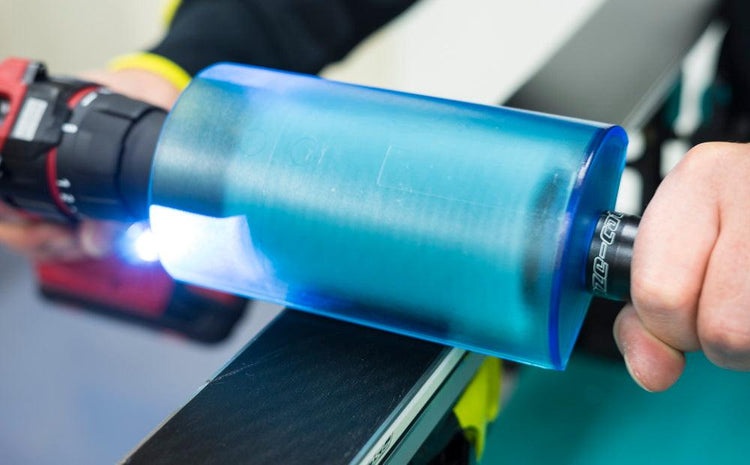Sharp edges not only guarantee enormous skiing pleasure, they are also essential for safety on the slopes. However, it is not enough to just maintain the edges, another extremely important part of ski preparation is ski base care. A good Care and preparation of the ski base goes hand in hand with grinding ski edges - one builds on the other and only works together. So how do you keep the base in good condition, and what should you look out for when choosing tools and materials?
To prepare a ski base from scratch for use on the slopes, one works mainly with base-brushes. These differ in three properties: Bristle material, design and use. Which brush should be used when it can be explained using a specific example. This describes the care of the flooring from start to finish.
The respective brushes are linked in the text. Here you can find an overview of all brushes:
TO THE BRUSHES OVERVIEW
Step 1: Cleaning the surface and exposing the surface structure
Author: Frank Steidle from 11.10.2018
The first step to a perfectly prepared ski surface is cleaning. This is done with metal brushes – preferably the Brush material Bronze used. When Brushing of Ski base This removes old wax, chips, dust from grinding ski edges and other dirt that has accumulated from the base. Thanks to its solid structure, the brush penetrates deep into the coating structure, exposes it and refreshes the ski base. The skis are now ready for waxing and the next step.
Tip : Wipe your skis after using the Bronze brush Wipe it off again with a cloth, so you can be sure that even the last excess dirt particles are completely removed and will not be ironed back into the covering with the new layer of wax.
Step 2: Deep cleaning of the coating structure after waxing
At the Waxing the skis, Care should be taken not to apply too much wax. This would make the next step unnecessarily difficult. The excess wax is brushed off the ski base during the “deep cleaning” process. Nylon brush which partially exposes the base structure of the ski and – as already mentioned – removes excess wax from the ski base. With its rather soft texture, the Nylon brush ideal for brushing the base after waxing and for superficial work. After the described process, the ski base should only have a fine, even wax film and any possible unevenness should have disappeared. The right amount of wax is extremely important for comfort and safety on the slopes. Too much or too little wax on the base prevents the ski from gliding on the snow. The consequences are a significant loss of speed and the ski stalling on the slopes - in the worst case, this can even lead to a fall.
Tip : If you don’t want to invest too much time and energy into brushing, or can’t, have a look at the shop at brushing skis Here you will find all the Hand-brushes also our newest product, the motorized Roto-Brush. With a removable handle and the ability to be mounted on a simple cordless screwdriver, it is far ahead of conventional brushes, especially when it comes to saving time.
TO THE ROTO BRUSHES
Step 3: Finish
In the third and final step of the base tuning, the ski base is given the finishing touches with a so-called “finish”. This creates an even finer and softer Horsehair brush used to polish the base. The ski base is now perfectly prepared and professionally maintained.
Tip: The Horsehair base brush is particularly suitable for brushing out hard waxes (e.g. cold snow wax). In our shop you will also find a large selection of Ski wax for every condition as well as other professional and useful tools for Surface preparation.
